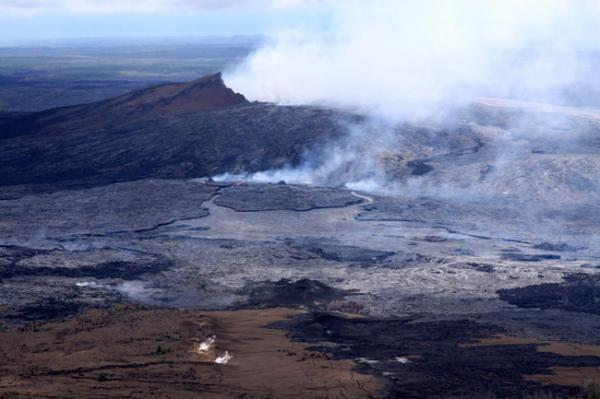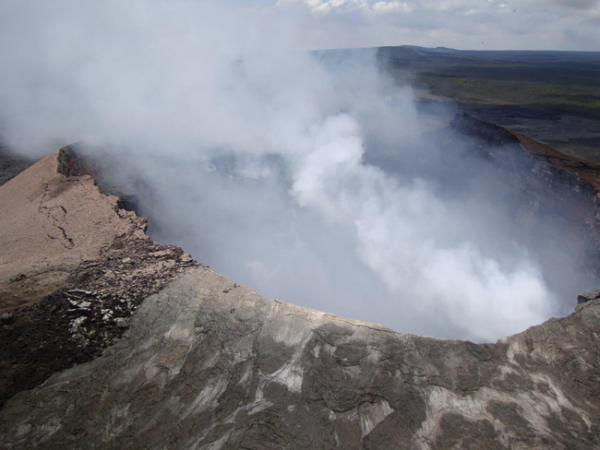
Huge Lava Pond Forms On Hawaii's Mount Kilauea

Lava continues to erupt from volcanic vents on Hawaii's Mount Kilauea and has pooled into a huge lava pond on the volcano's active east rift zone.
Spatter cones, formed from molten lava ejected from a volcanic vent,are feeding narrow, fast-moving lava flows, according to an eruption update from the U.S. Geological Survey's (USGS) Hawaiian Volcano Observatory. This area of Mount Kilauea has been erupting since 1983 with few interruptions.
The above image, looking east, shows a huge lava pond, fed by two main channels originating from several individual vents. The fume-filled crater of Pu`u `? `? is in the background. Volcanic craters are large holes created by volcanic activity. Inside of craters are vents that erupt lava.
The darker lava in the foreground is from the Kamoamoa Fissure that erupted earlier this year .
{brightcove OAP_110810_lava_pond}
One of the more vigorous vents, shown above, is topped by a 20-foot-tall (6 meters) spatter cone. The flow from this vent cascades down several steps, joining the flow from two other nearby vents, before flowing under a small bridge and into the broad area of ponded lava to the west.
The Pu`u `? `? crater, shown above, has been filled with thick smoke following the collapse of the crater floor earlier this week . A very tiny flow, visible only with a thermal camera, was active on the crater floor.
Get the world’s most fascinating discoveries delivered straight to your inbox.
This thermal image, looking southwest, shows the very small flow, at the bottom of the image, active in the bottom of Pu`u `? `? crater. In the upper right, the active flows on the lower west flank of Pu`u `? `? can be seen.
The active flows are entirely within Hawaii Volcanoes National Park and posed no direct hazard to any developed areas, according to the Hawaiian Volcano Observatory.






